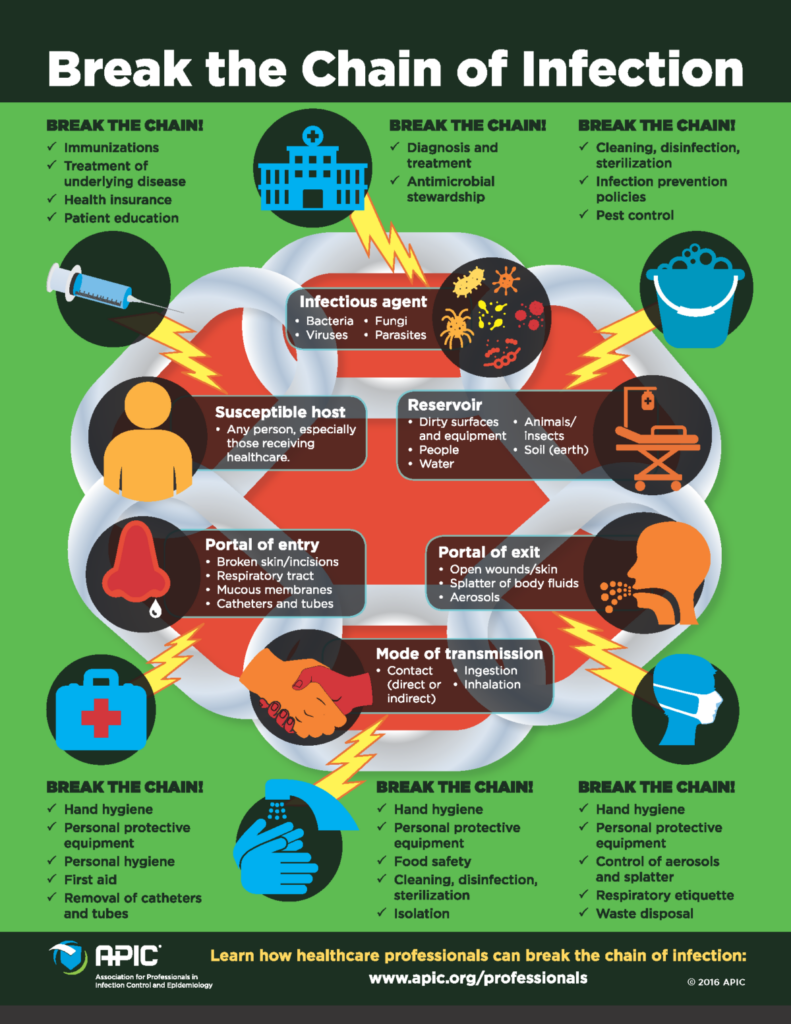There are many different germs and infections inside and outside of the healthcare setting. Despite the variety of viruses and bacteria, germs spread from person to person through a common series of events. Therefore, to prevent germs from infecting more people, we must break the chain of infection. No matter the germ, there are six points at which the chain can be broken and a germ can be stopped from infecting another person. The six links include: the infectious agent, reservoir, portal of exit, mode of transmission, portal of entry, and susceptible host.
- Infectious agent is the pathogen (germ) that causes diseases
- Reservoir includes places in the environment where the pathogen lives (this includes people, animals and insects, medical equipment, and soil and water)
- Portal of exit is the way the infectious agent leaves the reservoir (through open wounds, aerosols, and splatter of body fluids including coughing, sneezing, and saliva)
- Mode of transmission is the way the infectious agent can be passed on (through direct or indirect contact, ingestion, or inhalation)
- Portal of entry is the way the infectious agent can enter a new host (through broken skin, the respiratory tract, mucous membranes, and catheters and tubes)
- Susceptible host can be any person (the most vulnerable of whom are receiving healthcare, are immunocompromised, or have invasive medical devices including lines, devices, and airways)
The way to stop germs from spreading is by interrupting this chain at any link. Break the chain by cleaning your hands frequently, staying up to date on your vaccines (including the flu shot), covering coughs and sneezes and staying home when sick, following the rules for standard and contact isolation, using personal protective equipment the right way, cleaning and disinfecting the environment, sterilizing medical instruments and equipment, following safe injection practices, and using antibiotics wisely to prevent antibiotic resistance. Learn 10 ways to protect patients.

